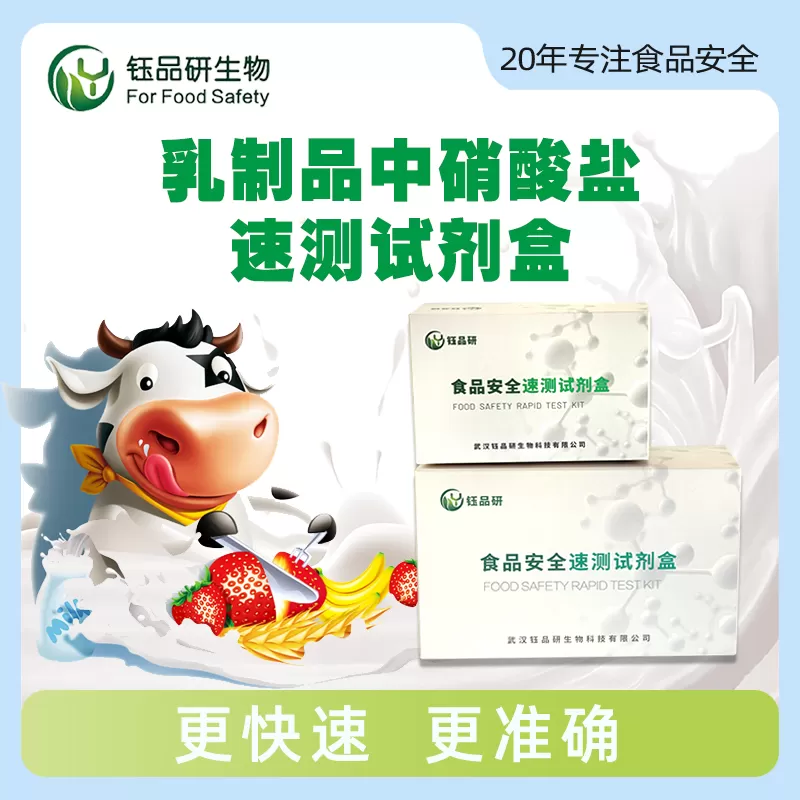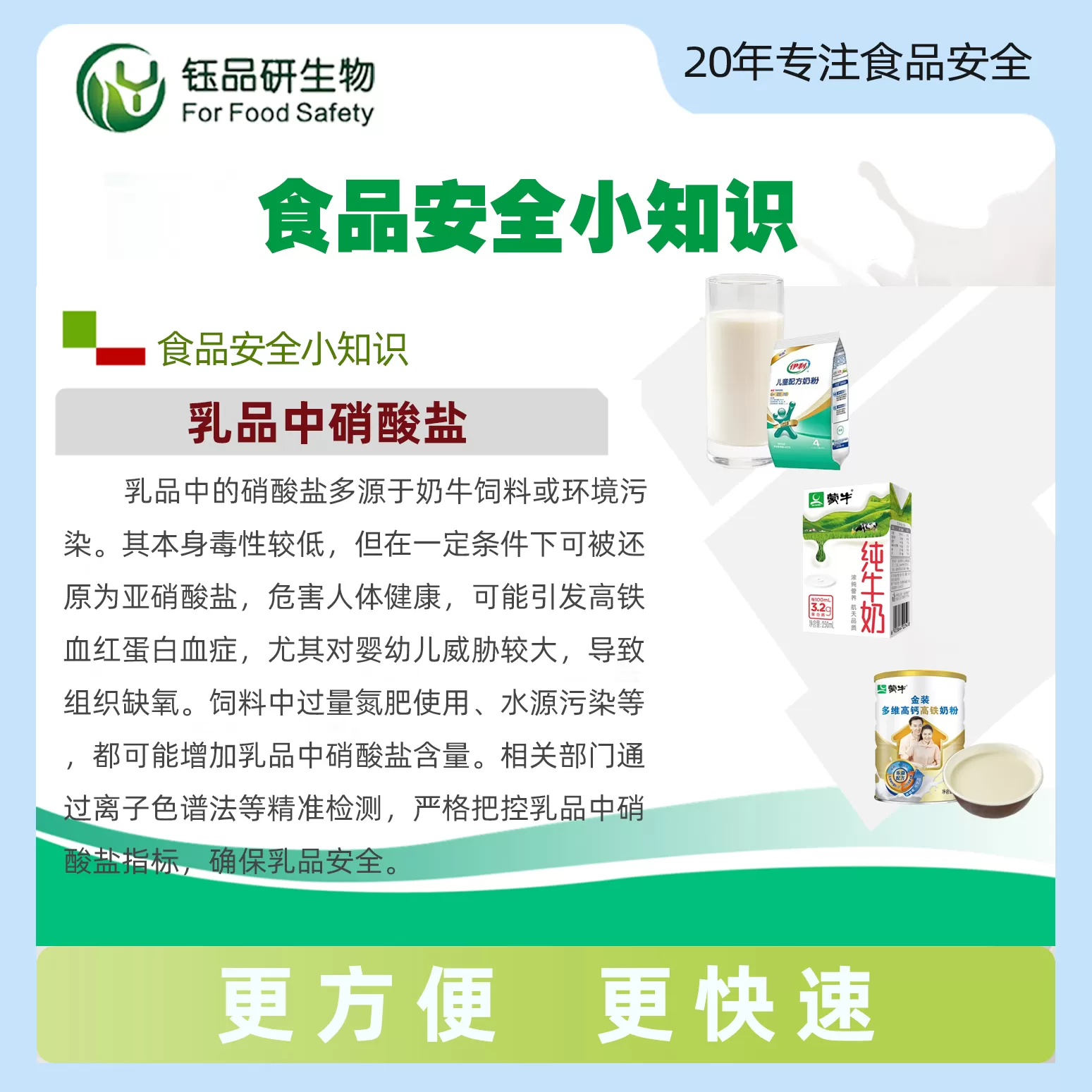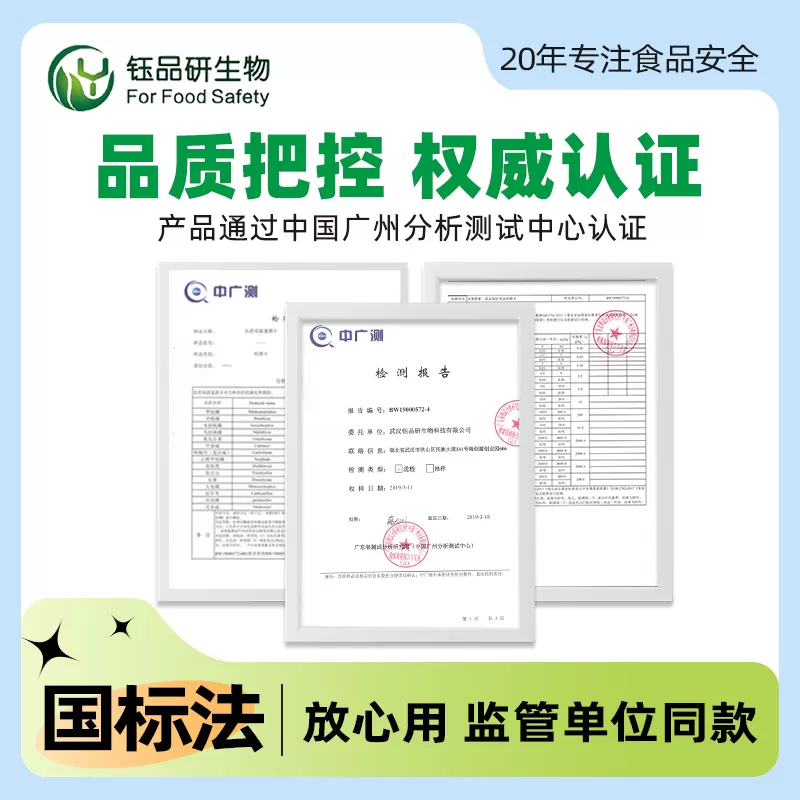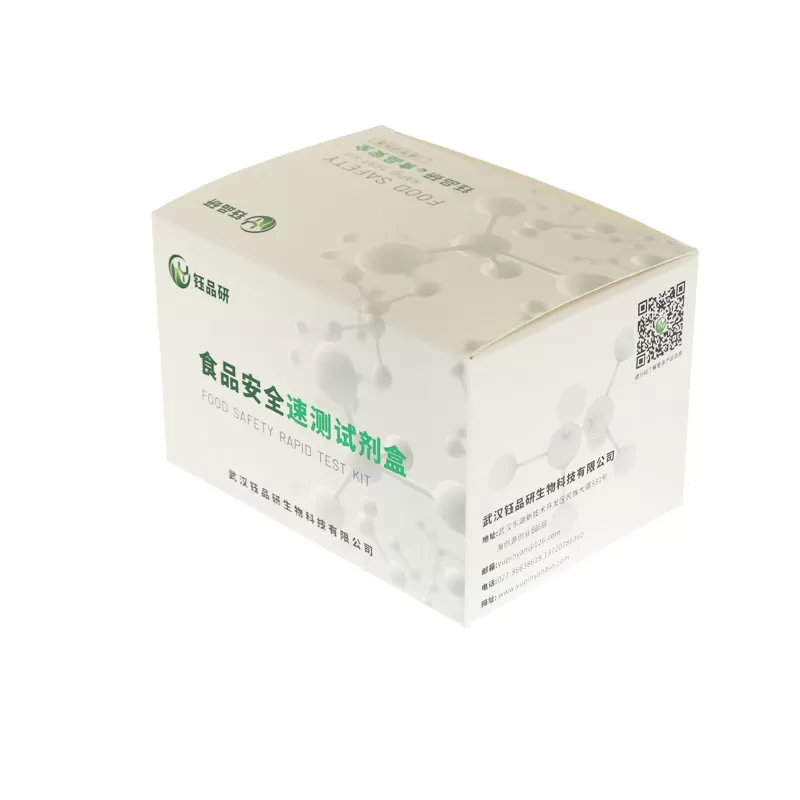Nitrate Quick Test Kit Instructions
1 Introduction
Common nitrates include sodium nitrate, potassium nitrate, ammonium nitrate and nitrate converted from agricultural nitrogen fertilizers. In some areas, due to the application of nitrogen fertilizers all year round, the content of nitrate in vegetables, fruits and livestock feed is higher. Data show that nitrate itself is not very toxic, but after entering the human body, it will be converted into some nitrites or amines due to the action of intestinal bacteria, which poses a hazard to the human body.
2 the detection principle, nitrates in food react with chromogenic agents to generate colored compounds. Visual colorimetric analysis is used to compare with the color card in the nitrate kit to determine whether it contains the substance to be inspected.
3 Detection range, drinking water, vegetables, fruits, etc.
4 Technical indicators, detection limit: 10mg/L
5 sample determination
5.1 Drinking water: directly take 1.0mL sample plus 1 spoonful of reagent A to the centrifuge tube for testing, shake to dissolve the reagent, let stand for 30 seconds and compare with the colorimetric card, take the same or similar color scale on the indicated value is the content of nitrate in the sample (in N).
5.2 Vegetables, melons and fruits: Weigh 1.0g of crushed or mashed sample into a 10ml centrifuge tube, add distilled water (or purified water) to a 10mL scale line, fully shake and let stand for 5min. Take 1mL of supernatant or filtrate for determination (if the sample solution has color, you can add an appropriate amount of activated carbon to shake to decolorize), add 1 spoonful of reagent A to the centrifuge tube, shake to dissolve the reagent, let stand for 30 seconds and compare with the colorimetric card. Take the content indicated on the same or similar color level and multiply it by 44.3 to obtain the nitrate content in the sample (in terms of nitrate). The nitrate limit index of some foods is calculated as NaNO3, and the reading result is multiplied by 44.3 and then multiplied by 1.355.
5 Milk sample: directly take the 1.0mL sample and add 1 spoonful of reagent A to the centrifuge tube for testing, shake the reagent to dissolve, let stand for 30 seconds and compare with the colorimetric card, because the emulsion has nearly 1 times the refractive index, take the same or similar color scale indicated value multiplied by 2 is the content of nitrate in the sample (in N).
6 Note
6.1 The sample contains nitrite will form a positive interference. When it is suspected that the sample may contain nitrite, the sample can be measured by the nitrite quick test tube. The total amount measured by the nitrate quick test tube minus the content measured by the nitrite quick test tube to obtain a single nitrate content.
6.2 Nitrate is often present in drinking water, and should not be used as a diluent for determination. Purified water or distilled water should be used.
6 If the test results exceed the highest value on the colorimetric card, or the sample has a large water absorption and it is not easy to absorb the supernatant, the dilution water can be increased, and the dilution multiple can be multiplied when calculating the results.
6 This product is only used for primary screening, and the final results are subject to the relevant national standard methods.
7 Storage conditions and valid period
Reagents are stored in a cool and dry place at 4-30 ° C, protected from light, and the valid period is 12 months.
8 Kit packing list
Specifications: 50 samples/box
Name
Quantity
Unit
Remarks
Reagent A
1
tube
small medicine spoon
1
straw
1
bag
Repeated after cleaning
10 ml centrifuge tube
1
bag
Repeated after cleaning





